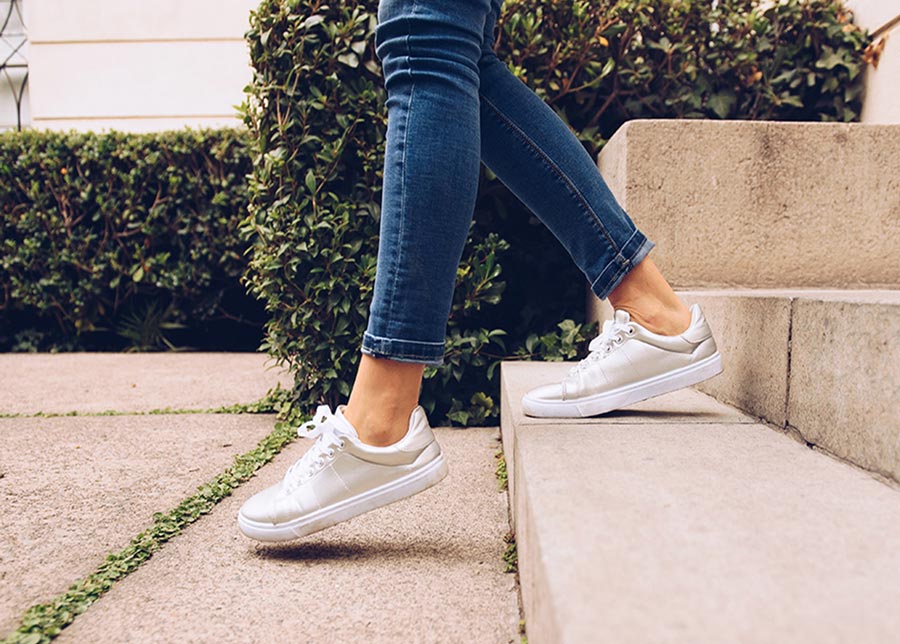What Custom Orthotics Can Teach Us About Everyday Footwear Design
Orthotics have many benefits, and orthotic-inspired insoles allow footwear brands to deliver those benefits right out of the box.

Lifestyle shoes need to do a lot for your customers to get them comfortably through a day. No one wants to have foot pain or discomfort when moving through their daily lives, and if you manufacture casual, everyday footwear, it should be something your customers can slip on without a second thought.
Even if your outsole and upper are an ideal design and construction, the insole (and the foam it’s made from) can make or break a lifestyle shoe. This post is the fourth in our series about the best insole foams for different types of shoes, and explains the important role foam plays in insoles for everyday footwear – especially as casual sneakers become a staple wardrobe piece.
Your customers are counting on their shoes to support them as they walk around the grocery store, teach their child how to ride a bike, or speed-walk through an airport to catch their flight.
Lifestyle shoes need as much comfort, performance, and support from the insoles as any other shoe because they do a lot of daily heavy-lifting.
The type of foam used should help provide:
Everyday shoes are worn more frequently, so the foam must withstand repeated compression without breaking down.
Insole foam absorbs shock and disperses pressure, keeping feet from feeling fatigued.
The right foam, paired with the right shape, can help maintain better alignment and foot stability.
Your customers associate a comfortable, responsive insole with a well-made shoe, increasing brand loyalty.
For lifestyle shoes, the insole foam isn’t just providing softness. It needs to provide the right balance of cushioning, resilience, and shape retention.
Different types of foam offer different benefits depending on the type of everyday shoe you’re designing. Here’s a breakdown of the top contenders:
Ideal for:
Casual sneakers and boots.
Why it works:
PU foams offer excellent shock absorption and long-term resilience. They retain their cushioning longer than basic EVA and mold well to the foot’s shape over time.
The foaming process can also provide a wide variety of cushioning experiences. Open-cell PU foams also allow for some breathability, which helps keep shoes feeling fresher even with regular use.
Ideal for:
Sustainable lifestyle shoes and modern casualwear.
Why it works:
Today’s top footwear brands are integrating bio-based materials to meet sustainability goals without sacrificing performance. Bio-based foams can offer excellent cushioning and improved environmental impact, helping enhance your brand story.
INSITE’s plant-based foams with Susterra® Bio-PDO™ blend durability, impact protection, and a bio-based composition to align with both comfort and sustainability needs, packing a lot of everyday benefits into one insole.
Ideal for:
Flip-flops, slides, recovery sandals, and lightweight sandals.
Why it works:
EVA foams are lightweight and flexible, making them ideal for open footwear styles. While they don’t always provide the long-term durability of PU, they’re a great fit for more minimal shoes.
Given the repeated and frequent use of sandals, brands should consider an EVA blend with higher resilience or reinforced structure, especially for recovery footwear that customers expect to last over several seasons.
Ideal for:
Boots and shoes worn for long periods or on varied terrain.
Why it works:
Combining a softer top layer for comfort with a firmer bottom layer for stability, dual-density foams provide all-day wearability without sacrificing support. This approach works well in shoes that consumers use for multiple lifestyle purposes, such as at work and for casual wear.

When selecting insoles for your lifestyle footwear line, brands should keep the following criteria in mind when it comes to the insole foam:
Compression set resistance:
Will it hold its shape after hours of wear?
Rebound:
Does it offer energy return, or feel flat after one wear?
Sustainability:
Does the foam’s material construction support your environmental goals?
Moldability:
Is the foam shaped into an ergonomic insole?
Comfort and performance start from the inside out. Our range of high-performance foams are designed to satisfy the needs of everyday footwear to support wearers throughout their entire day, whether they’re wearing classic sneakers, modern boots, or sandals.
Our foams are engineered for optimal rebound, durability, and underfoot comfort, and we use biomechanics and human factor data to build insoles based on the science of foot health. For your next lifestyle collection or revamp of your go-to casual shoe, give your customers more than a standard insole.
At INSITE, we partner with footwear brands to deliver scientifically grounded, performance-focused insole solutions that integrate seamlessly into your design and manufacturing processes. Whether you’re building for running, training, walking, or sport-specific movement, we’ll help you craft insoles that keep your customers moving – and coming back for more.
Orthotics have many benefits, and orthotic-inspired insoles allow footwear brands to deliver those benefits right out of the box.
Shock absorbing insoles could be the key to preventing lower body pain and discomfort. In this post we break down the reasons to switch and how to choose a high-quality shock absorbing insole.
Shoe brands can reduce footwear returns and increase customer loyalty by using the right insoles for enhanced comfort, performance, and support.